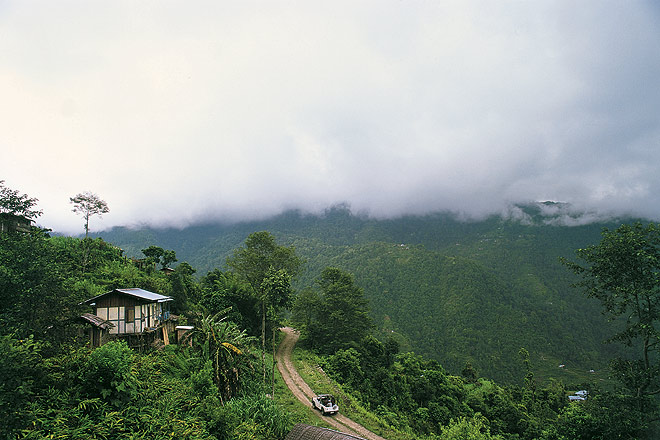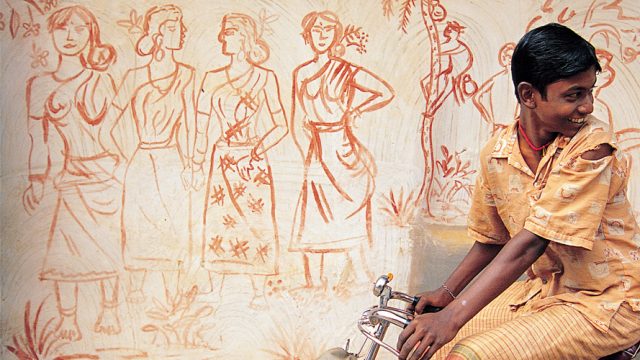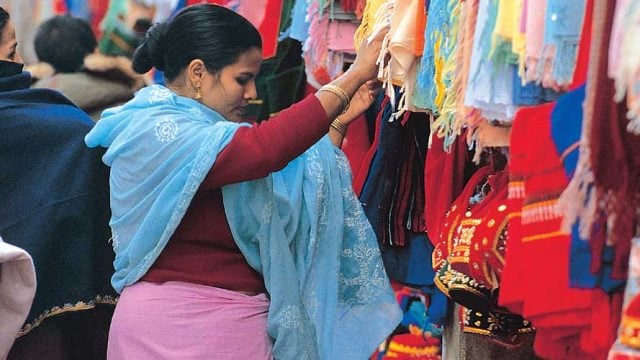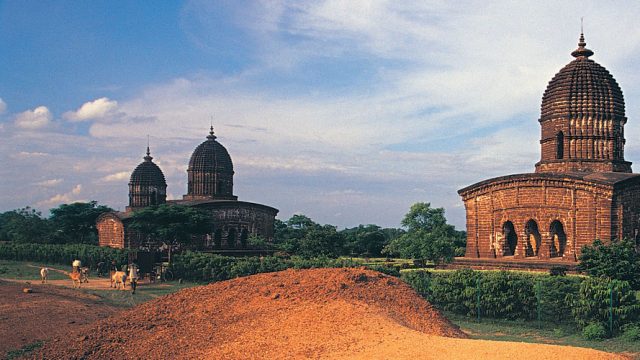Gongoni: Whenever someone refers to the word ‘canyon’ in describing a destination in India, the names that pop up are Mahabaleshwar, Ranhe Falls or Gandikota. However, in the most unusual place in India lies a full-fledged gorge. Welcome to the ‘Grand Canyon’ of West Bengal—Gongoni. Tucked away near the small settlement of Garbeta, this fascinating wide gorge of red soil stands on the banks of river Silabati. Locally known as Gongoni Danga or Gongoni Khola, this handiwork of nature has been created through years of soil erosion, coupled with some assistance from the river, which flows through the canyon during the monsoon. You will often find many fishermen spreading their wide nets in the river, which makes for a pretty picture. Early in the morning, the 180°-view can take quite literally your breath away. One of the attractions of the canyon is that such landscapes are quite uncommon in the Bengal plains. The surface comprises of red soil, which turns yellowish as you go down the slopes. In mellow sunlight this often turns golden. The initial impression one gets when one stumbles upon the canyon are of old Westerns such as McKenna’s Gold. The setting could well be the Wild West—the only element missing is a cowboy saying “Howdy!” There is a small cave at the bottom of the canyon that locals say was once inhabited by the demon Bakasura. A local folklore has it that the Pandava prince Bheem killed the demon at this very spot. It certainly adds to the atmosphere. Dooars: The gateway to India from Bhutan, set in the foothills of the Eastern Himalaya, the Sankosh river splits the Dooars into its western and eastern regions, spread over Sikkim and West Bengal. The Dooars are a hub of natural diversity with a variety of tea gardens and a number of wildlife hotspots like Manas National Park, Buxa National Park, Gorumara National Park and the Mahananda Wildlife Sanctuary. Nature enthusiasts and adventure-seekers can head to the Teesta river for white water rafting. You can also go for some interesting treks and jungle safaris here. The region is also a birder’s delight as it’s home to a huge variety of avian species. The Dooars can be reached via an overnight train ride from Kolkata to New Jalpaiguri. Bishnupur: The town of Bishnupur in West Bengal is known for the great variety of terracotta temples of great beauty and art-historical value. Dedicated to the benefactor of the Malla dynasty, Lord Krishna, the Muralimohana and Madanamohana temples are decorated with intricate terracotta sculptures. Built in the ekaratna style, the Radhe-Shyam temple is dedicated to its titulary deities. With its unique structural design—a cube-shaped shrine with pillared corridors and a pyramidal roof—the Rasa Mancha temple is of great religious significance. Other such shrines are spread over the region, including the Keshta Raya temple and the famous Jor Bangla temple. Buses ply regularly from Kolkata to Bishnupur; the journey takes 4–5 hours. The Information For a day trip: Rupasi Bangla Express reaches Garhbeta Railway Station at 9.20 am. Cycle vans are available at the station and these are the common mode of transport to Gongoni. One can return by the same train at 5.47 pm. There are no accommodation facilities here. The only decent eatery is Suruchi restaurant opposite Garbeta College. For a weekend trip: The heritage town of Bishnupur is only 27km from Gongoni. There are plenty of accommodation facilities here. You can hire a car and visit both locations in a day.
Buxa National Park
Dooars
Gongoni





